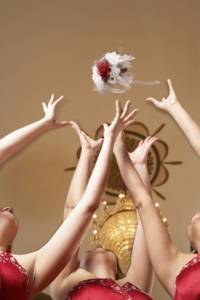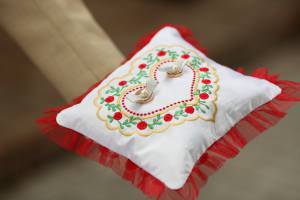
If you don’t want a maid of honor, it can be helpful to familiarize yourself with this information before deciding what the best choice is for your big day.
There are a lot of moving parts involved with planning your wedding. Often, couples want all the help possible to get the entire event up and running. Having a maid of honor can be invaluable during this time, as this individual tends to take on a lot of duties throughout the process. Still, you may not feel like you want a maid of honor. There are plenty of reasons for this decision, from not knowing who to select to wanting to keep the affair simple. There is no rule saying you absolutely must have someone fill this role.
If you don’t want a maid of honor, it can be helpful to familiarize yourself a bit with the choice you’re making. Look over this information and decide what the best choice is for your big day.
What Does the Maid of Honor Do?
The maid of honor is usually responsible for a number of different tasks associated with the wedding. Usually these responsibilities include throwing a shower and bachelorette party, taking on jobs like mailing invitations, and keeping tabs on all the members of the wedding party. When you don’t have someone acting in this role, you will need to either take these tasks on yourself or find someone who can organize things for you. Having help is always a plus, even when you aren’t asking someone to be your maid of honor.
You also will need to think about your wedding party. Are you planning on having bridesmaids and groomsmen? You can still have a wedding party without a maid of honor. In fact, some couples make the choice to forego this position in the party because there are too many qualified options. When you don’t want to hurt someone’s feelings, you can ditch the maid of honor and simply go with having bridesmaids. This can ultimately be a helpful decision, as you can delegate various duties to each member of the party rather than relying on one specific person.
Party On
As mentioned, the maid of honor is also the person who traditionally puts together the wedding shower. By removing this person from the equation, you’ll need to arrange the plans yourself or find someone else who can take on the job. This could be a perfect task for your mother or the mother of your partner, especially if she wanted to get involved and you didn’t know what to offer. You may also want to see if the members of your wedding party would like to plan this for you, though it is likely you’ll need to give warning.
Showers are also not a requirement. If you had an engagement party, then throwing a shower might be a bit too much. These days, couples are moving away from the traditional route of having a shower. You’re already planning your wedding; you might not want to add yet another event to your calendar that you need to help organize. When you opt not to have a maid of honor, you’ll need to make this decision for yourself and determine whether or not you find a shower necessary.
Trusting Your Significant Other
In the past, the maid of honor would take on a lot of responsibilities that otherwise could have been performed by the groom-to-be. Since more and more couples are contributing equally when it comes to planning a wedding, it is likely you can simply ask your partner to take on many of the jobs the maid would have received. When you have the support of your significant other, the entire process will be a lot easier than trying to do everything by yourself.
The decision to use a maid of honor in your wedding comes down to your own preference. As long as you have people who can assist you along the way, you should be able to take on whatever tasks await.




